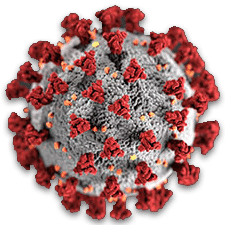As so many Americans work from home, as our schoolchildren and university students shift to online learning, as virtually all of our social interactions occur online, a fundamental question looms: Will the internet break? The answer is probably not a simple yes or no, and it’s probably not the same answer everywhere in the United States.
That’s why the Federal Communications Commission (FCC), the agency where I previously served as general counsel, should issue a weekly broadband status report, updating America on what is working about our broadband networks and what, if anything, is not. America’s network infrastructure is a patchwork quilt of technologies reaching across a vast geographic area with widely varying usage patterns even in normal times. But we are not in normal times, and the need for an entity that can provide school administrators, emergency planners, and the general public with a bird’s eye view of the health of our variegated communications systems and technologies has never been greater. It’s not enough to receive (if we do) individual network reports. The FCC, with its view across networks, should step up.
In an ideal world, communications networks are built to handle peak loads. When I worked at MCI Communications in the 1990s, for example, our network engineers understood that the peak traffic of the year for long-distance telephony was Mother’s Day, and that the peak volume of business telephone traffic came at about 10 a.m. Eastern Time the Monday after Thanksgiving. It’s true that a lot has changed with the transition to broadband, but traffic is still heavier during some periods than others. This is a challenge network engineers are accustomed to confronting.
What’s different with the arrival of the Covid-19 pandemic, of course, is that the patterns of demand have shifted almost instantaneously. Home connections are being asked to handle aggregate demand that had been traditionally handled by bigger connections — the kinds that serve businesses and institutions like colleges and libraries.
OpenVault, a New Jersey-based company that tracks home internet usage, has reported “soaring” broadband consumption, with “actual usage up across the board, and by more than 40 percent during 9-to-5 business hours.” Other reports suggest that Verizon’s web traffic increased by almost 20 percent in just one week in March. Not surprisingly, an analysis of broadband traffic by the Seattle-based internet metrics company Ookla shows a dip in the mean download speed over broadband in March. (When demand exceeded supply in the analog telephone days, you simply couldn’t get a line. On a digital network, when competition for a finite amount of capacity increases, the packets of data slow down like cars in a traffic jam on the freeway.)
And all of this is happening on a nationwide network that varies widely from place to place in terms of technology, usage patterns, and other variables. Consider:
- Networks built with fiber optic connections have the most capacity. But millions of Americans still rely on copper-based DSL, which is slower; satellite broadband, which typically has strict usage limits; and fixed wireless services.
- We know that usage patterns have shifted, but by how much? Is there a need for them to shift again — the digital version of social distancing — to ease strains on some networks (at least to the extent that people can time-shift some of their online activities)? Is this shifting usage impacting the continuity of business operations?
- Some geographic areas — Seattle, for example — are seeing a bigger boost in traffic demand than others, and the resources to handle such surges are not uniformly distributed.
- Former FCC chairman (and my former boss), Tom Wheeler, has consistently warned of the need for the FCC to be resolute in increasing cybersecurity of networks, and he’s offered specific suggestions for work to be done on 5G networks. With so much of our health and life now dependent on broadband, cybersecurity needs even more emphasis across networks.
Put simply, no two places are likely to be impacted the same way by the great shifts now underway amid Covid-19, and only the FCC has the authority and capacity to study and report on the health of these networks as a whole. Doing so could help the agency — and us — to identify potential trouble spots before communications capacity is lost.
In response to changed usage patterns and concerns that its own communications infrastructure wouldn’t hold up, the European Commission persuaded streaming platforms like Netflix and Amazon to decrease their video quality to lower overall data usage on networks there. In the U.S., broadband companies tell us they are well prepared and able to add broadband capacity if needed. Last week, for example, the chief executive of AT&T told CNN that “we’re seeing some signs of stress” but that “the network is performing quite well.”
 |
Got questions or thoughts to share on Covid-19? |
It’s worth remembering that this is a fast-evolving situation, both in terms of shifting usage and network response. And it’s important not to be alarmist. But it’s also important to be sure that we’re prepared. That’s where the FCC should come in. Congress created the FCC, after all, precisely to ensure that “all the people of the United States” have access to communications networks with “adequate facilities” for, among other things, “the purpose of promoting safety of life and property.”
With that in mind, the FCC should be receiving daily reports — designed to fit within existing efforts — from broadband providers to understand the dynamics of shifting usage. FCC experts can look across networks and identify common patterns of traffic change. It can share — using anonymized data and protecting proprietary information — appropriate analyses among providers to give them a more complete understanding of conditions.
The FCC should study broadband network operations and it should share appropriate information with the public. Most importantly, it should tell us what to expect. That’s the job of experts during crises, rapid changes, and uncertainty: to help us navigate an uncertain future.
Jonathan Sallet is a former general counsel for the Federal Communications Commission and currently a senior fellow at the Benton Institute for Broadband & Society, a Chicago-based nonprofit organization working to bring affordable, high-capacity broadband to all people in the U.S. to ensure a thriving democracy.












Comments are automatically closed one year after article publication. Archived comments are below.
Jonathan: I’ve been tracking directly with many friends running networks. I’ve been delighted and surprised by how few major problems have developed
Who runs the Internet? The FCC or a private contractor in California.